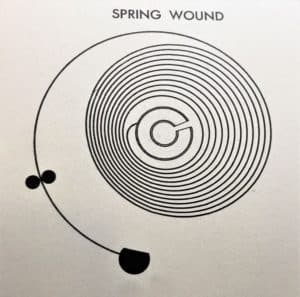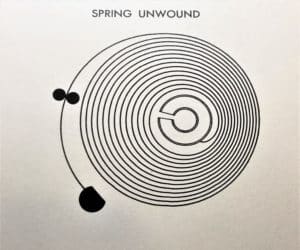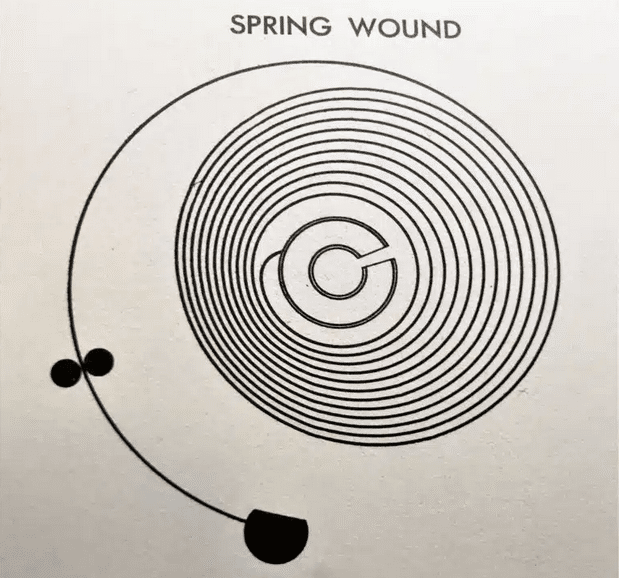There is a characteristic present in a flat hairspring as it vibrates, i.e., winds and unwinds, that causes the coils to bunch together first on one side of the balance staff, then on the other. Fig. 1. and Fig. 2. Because of this action, it is apparent that a side thrust or pressure is brought to bear between the balance pivots and their jewel bearings. As the spring is wound up, the pressure is exerted in a direction away from the regulator pins. As the spring unwinds, the pressure is toward the regulator pins. This pressure causes an unequal turning action, or torque on the balance staff. The greater the swing of the balance, the greater will be the side thrust and the resulting friction. This means that the energy received by the jewel pin from the pallet does not all go into winding and unwinding the hairspring. Some of it is dissipated in overcoming friction. Because of this, the force exerted by the hairspring on the balance staff will not be directly proportional to the angle through which the balance staff is turned.
Because of this characteristic, a watch containing such a hairspring would tend to gain in the high arcs and lose in the low. In short, it would not be isochronal.
Fig. 1. Spring Wound

Fig. 2. Spring Unwound

More about The Breguet Hairspring






